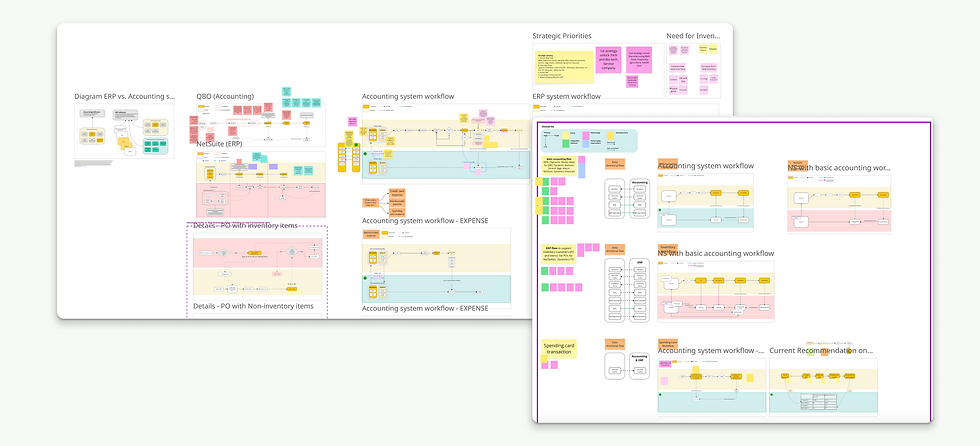
Procurify - 2023
Scaling ERP integrations with simplicity
From manual workarounds to a framework for growth
Project duration
6 months
Team
Product designer (me), Product manager, Engineering manager, Software developers (4)
Context
As Procurify expanded from SMBs into mid-market and enterprise, ERP integration became a critical growth blocker. Finance teams relied on ERPs for daily operations, but our fragmented integrations caused 10% ARR loss and low adoption of the Accounts Payable module. Enterprise customers needed seamless, reliable ERP connections to stay and grow with us.
My role
As the product designer, my contribution were:
-
Built a modular, reusable design system for ERP integrations, improving design velocity and enabling engineering to scale faster.
-
Partnered with implementation managers and customer success to uncover onboarding pain points that shaped the roadmap and prioritized workflows.
-
Visualized the complex Procure-to-Pay workflow between Procurify and ERPs, exposing feature gaps and helping stakeholders align.
-
Led usability testing to validate designs before handoff.

Problem
The ERP integration process was slow, opaque, and error-prone:
-
Weeks of setup required IT managers or third-party technicians.
-
Users had no visibility into sync status.
-
Sync errors couldn’t be fixed independently.
-
Unsupported ERPs forced users into clunky CSV exports.
This left the customers admin and finance teams frustrated, dependent on support, and unable to trust Procurify at scale.



Solution
I worked with PM and engineering to prioritize phase-one requirements, focusing on the most urgent user pain points. The redesigned ERP integration configuration page introduced:
-
Self-service setup that finance teams could manage without IT.
-
Simplified workflows for faster onboarding.
-
Clear visibility into sync status and errors, reducing reliance on support.



Impact
-
Addressed ERP integration gaps, that had been linked to ~10% ARR risk, improving customer retention confidence
-
Onboarding cut from weeks to days with self-serve setup
-
Expected to reduce ERP-related tickets by ~20%. by designing clearer error handling and self-service resolution paths.
-
Established the ERP integration framework, enabling Procurify to launch 4 new ERP/accounting system integrations within a year, covering the majority of customer workflows.


Reflection
What I learned - Principles
-
Design for the ecosystem, not just the end user Complex workflows span roles, time, and systems. Mapping the whole ecosystem uncovers pain points that single-user research misses.
-
Tie design success to business outcomes The value of design isn’t clicks or speed alone — it’s ARR retention, fewer support escalations, and customer trust.
-
Build systems that enable scale Reusable patterns don’t just save time — they let teams launch new integrations without design support, multiplying business impact.
What I'd do differently
-
Always start with a high-fi workflow map — even when the project feels simple or time is tight. I’ve learned the value of beginning with a high-fidelity end-to-end map. It surfaces hidden technical constraints early, creates alignment across teams, and ensures the design scales beyond the happy path.
Next step
This project laid the foundation for Procurify's ERP integration strategy - we are still scaling today!